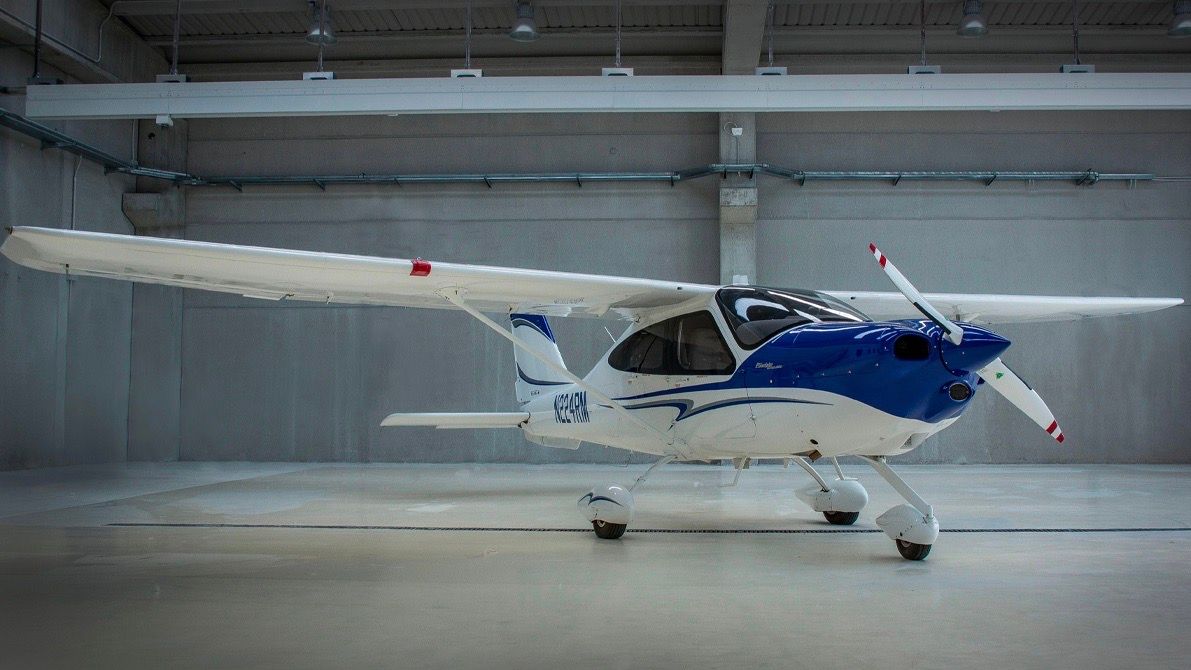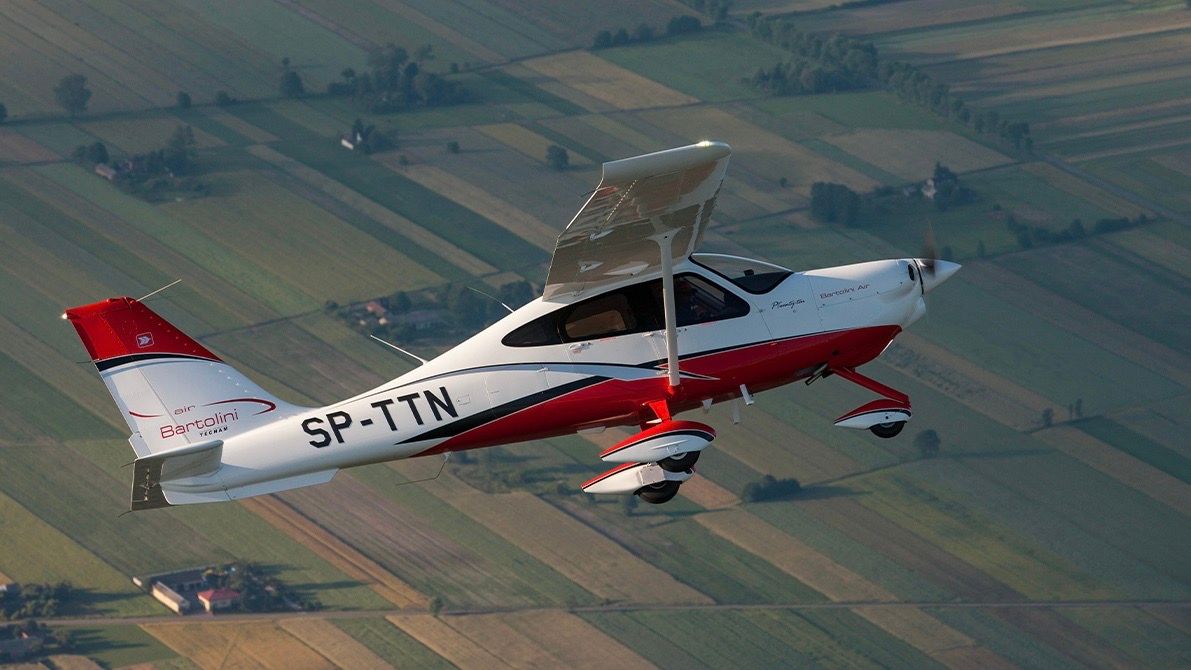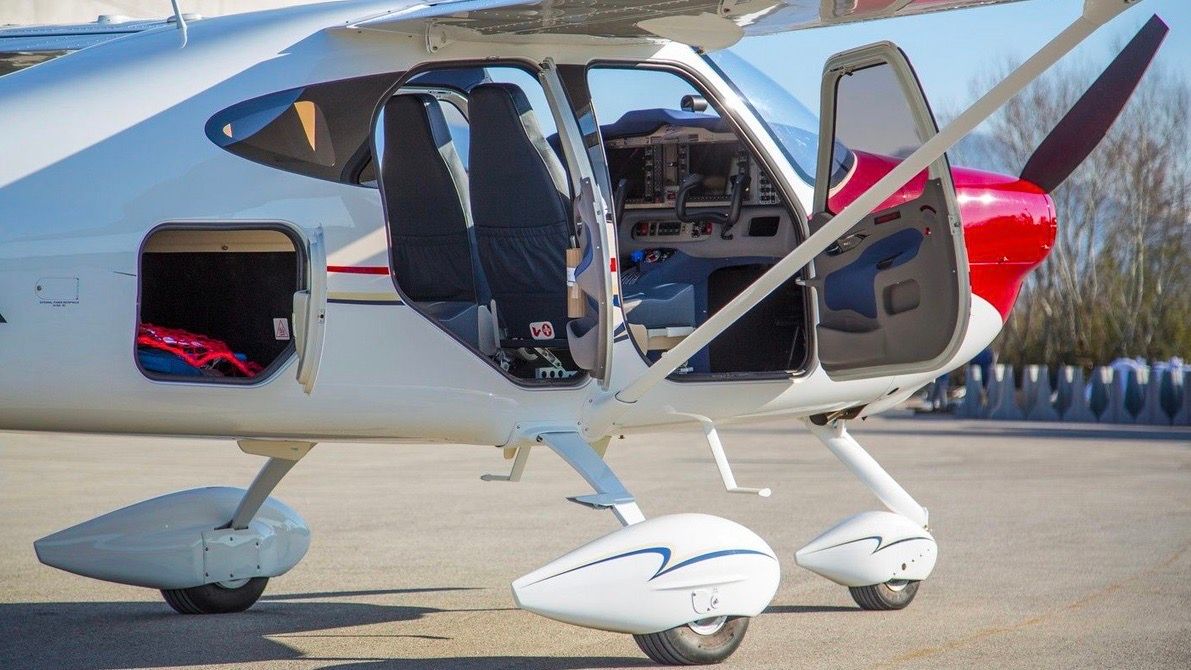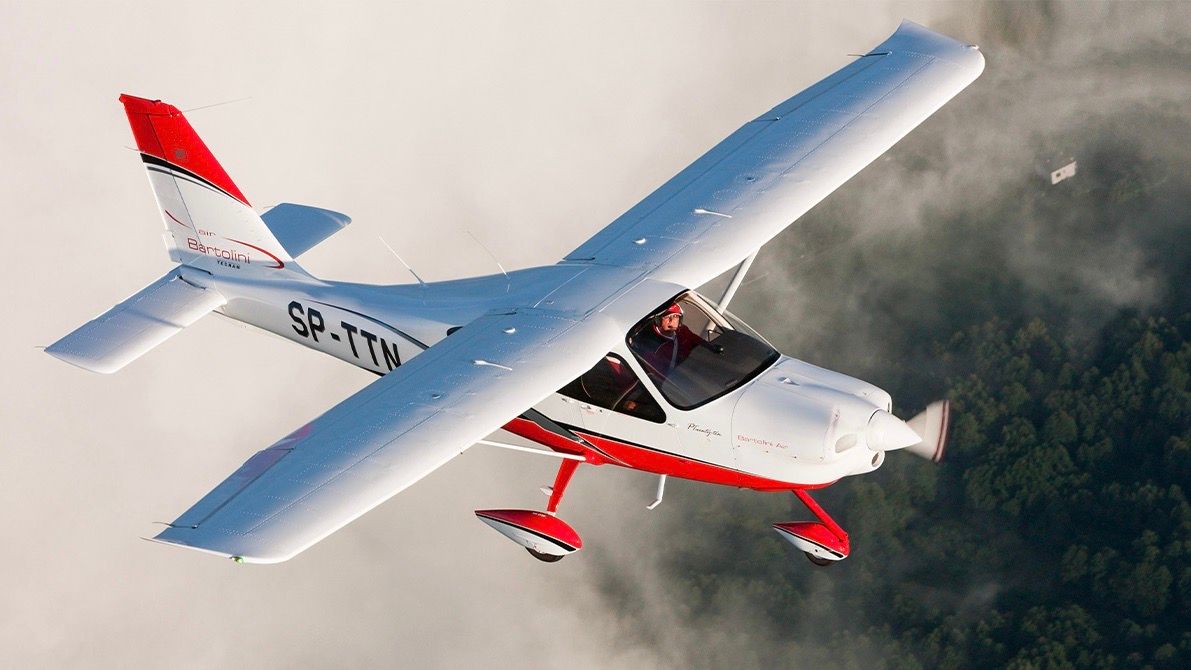The Tecnam P2010 is a four-seat (one pilot plus three passengers) high-wing single-engine light aircraft. The P2010 first flew in April 2012 but did not receive certification by the European Union Aviation Safety Agency (EASA) and the US Federal Aviation Administration (FAA) until April 2014 and December 2015 respectively.
The aircraft was built in Italy and is still in production today. It is known for its stability and balance as well as for being modern and advanced in the current market. Its original price was $345,000. Since 2014, over 245 P2010 have been built. Let’s take a look at the aircraft in more detail.
Photo: Tecnam
Construction of the aircraft
The Tecnam P2010 was developed from the original P2008 two-seater aircraft but is a larger version. They both have metal wings and a tailplane with a composite fuselage with an integrated fin.
The wing’s leading edge is straight and has a constant chord on the inner section. Outboard, the trailing edge is tapered, and the straight wing tips are upturned.
The ailerons sit on the outboard of the wing and the flaps are on the inner section of the wing. There is a single lift strut on each side that is attached to the fuselage. The aircraft has a low set all-moving constant chord tailplane with an anti-balance tab. The rudder moves above the tailplane and the fin is swept.
Photo: Tecnam
The Tecnam P2010 is powered by a 180-horsepower Lycoming IO-360-M1A four-cylinder piston engine. There is also an option for a more powerful engine, the 215-horsepower Lycoming IO-390. The aircraft has a fixed tricycle undercarriage with spring cantilever legs and a castoring nosewheel. The wheels are fitted with speed fairings.
Quick facts:
- Engine: Lycoming IO-360
- Maximum cruise speed: 140 knots (259 km/h)
- Range: 720 nautical miles or 1,333 kilometers
- Ceiling: 13,000 feet
The new diesel variant
In May 2020, Tecnam launched an upgraded version of the aircraft, but it could be powered by diesel. It was called the Tecnam P2010TDI. It had a 170 horsepower turbocharged Continental Motors CD-170 engine that could be used with either diesel or jet fuel. The big advantage to the P2010TDI was that the range of the aircraft was increased from 720 nautical miles to 1050 nautical miles.
However, there were some disadvantages to the aircraft. It had a slightly slower cruise speed of 10 knots at 136 knots compared to the original version which had a cruise speed of 140 knots.
The aircraft was also more expensive than the original model at $412,000. Another issue was that the engine had to be replaced after 1,200 hours. Despite the issues, the P2010TDI was certified by EASA in October 2020 and by the FAA in November 2021.
Photo: Tecnam
Further variants
In July 2022, Tecnam announced the Gran Lusso variant, a luxury version of the aircraft. It has the Continental Motors CD-170 engine of the P2010TDI, which is a four-stroke diesel engine with double overhead camshaft with FADEC control.
The propellers are three-bladed MT Propeller Constant Speed. They are of wooden construction and rotate clockwise. Tecnam’s design team redesigned the aircraft’s interior to make it more comfortable and ergonomic. There are three entry doors to the aircraft.
The avionics suite is the Garmin G1000 NXi IFR (Instrument Flight Rules) and Flat-Panel suite with an integrated GFC700 autopilot. There is a large instrument panel with twin screens. The suite has Performance Based Navigation (PBN) that redefines the aircraft’s required navigation capability from sensor-based performance to performance-based.
A hybrid demonstration version of the aircraft was made, just for development purposes. It had a 139 horsepower Rotax 915iS piston engine coupled with a 40 horsepower Rolls-Royce electric motor.
Photo: Tecnam
Aircraft specifications for the Tecnam P2010TDI
General characteristics
- Capacity: 4 (pilot and three passengers)
- Length: 7.97 m (26 ft 2 in)
- Wingspan: 10.30 m (33 ft 10 in)
- Height: 2.64 m (8 ft 8 in)
- Wing area: 13.90 m2 (149.6 sq ft)
- Airfoil: NACA 63A
- Empty weight: 818 kg (1,803 lb)
- Max takeoff weight: 1,220 kg (2,690 lb)
- Fuel capacity: 240 L (46.2 Imp gal, 55.5 US gal) in two wing tanks
- Powerplant: 1 × Continental Motors CD-170
- Propellers: 3-bladed MT Propeller Constant Speed
Performance
- Maximum speed: 260 km/h (160 mph, 140 kn)
- Cruise speed: 237 km/h (147 mph, 128 kn) normal, at 65% power at 2,286 m (7,500 ft)
- Stall speed: 96 km/h (60 mph, 52 kn) flaps down
- Range: 1,780 km (1,110 mi, 960 nmi)
- Service ceiling: 5,486.4 m (18,000 ft)
- Rate of climb: 5.3 m/s (1,040 ft/min) maximum at sea level
The Tecnam P2010 and P2010TDI are comparable to aircraft such as the Diamond DA40, the Cessna 172S, and the Mooney M20. The P2010 is a modern and advanced state-of-the-art single-engine aircraft with balanced controls and unsurpassed stability. It is a comfortable four-seater aircraft that performs well and is known for its high safety record and low maintenance costs.
The direct operating costs of the P2010 work out at $111.64 per hour according to AltiSky. A pre-owned Teccnam P2010 can be bought for $370,000 for a 2016 model or $590,000 for a 2024 model according to Controller.
|
Direct Operating Costs |
Per hour |
|
Fuel and oil |
$52.00 |
|
Scheduled maintenance |
$32.64 |
|
Consumables |
$5.00 |
|
Propeller reserves |
$4.00 |
|
Engine reserves |
$18.00 |
|
Total: |
$111.64 |





